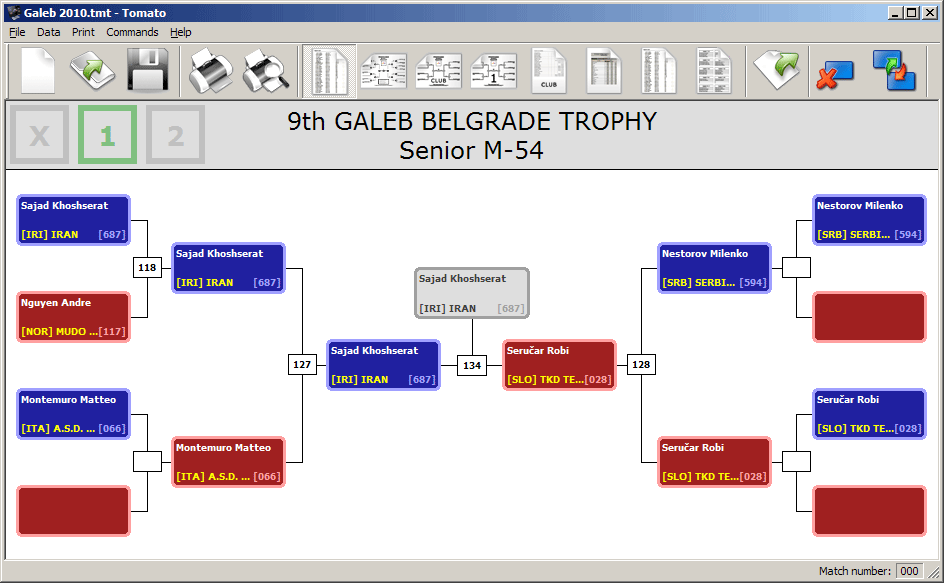|
Multiple day competition
Tomato is now able to support multi-day tournaments in one document. Previous version has also been used a lot for organizing multi-day tournaments, but competition had to be split in several files after entering of competitors.
You can now have the overview of a complete tournament in front of you. You can view modern lot tree charts or print any of Tomato's well known reports for a specific competition day, or for a complete multi-day tournament. Selecting the data you want to have displayed is done by just one click on the number of the desired day. Day numbers are displayed on the left side of the title area just below the toolbar. Here is a picture that shows it:

By selecting number one, only categories from day one will be displayed. Also, if you print competitor list, only competitors that have matches on the first day will be on the list. Even placement report will take in consideration just the first day of the competition.
If, on the other hand, you wish to print a report that will include all competitors and all the matches, regardless on the day of competition, you can simply select 'X' which is always next to number one, and that's it. You will have all the data from all competition days, just as everything would be if all matches were really in a single day.
If you have started organizing multi-day competition in a previous version of Tomato, you can load the file in Tomato 3, create additional competition days and assign the desired categories and matches to one of them. That way you can avoid splitting the file in just a few minutes, and continue enjoying the advantages of the new Tomato 3 by quickly accessing the data of the desired part of the tournament.
|

